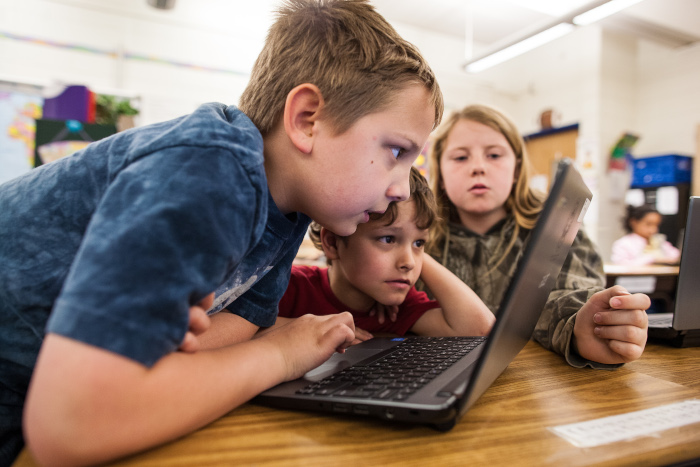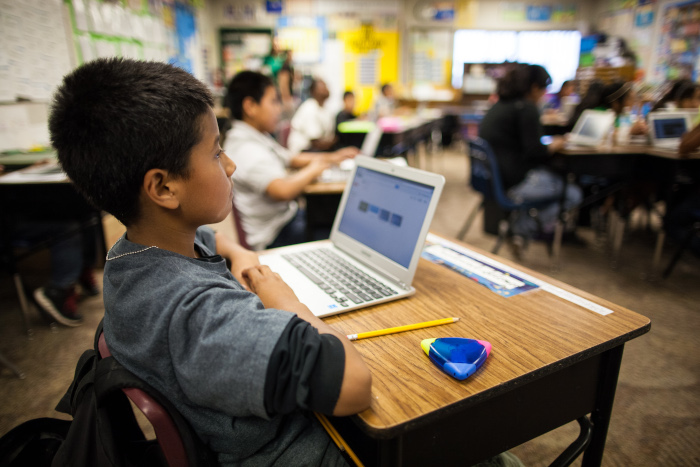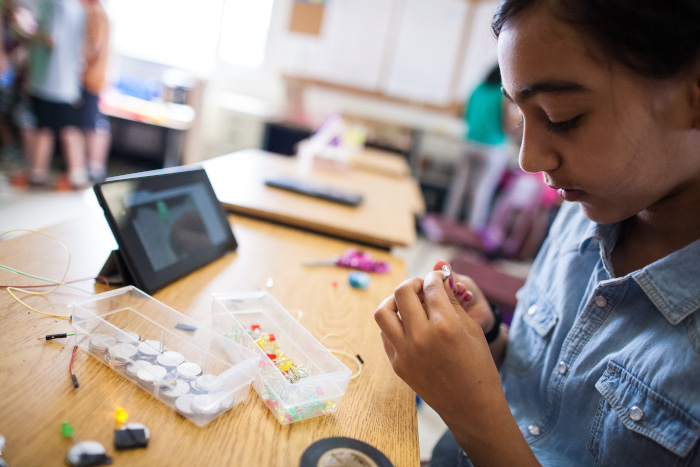
Technology is a hot topic these days in education. Some people are very supportive of integrating technology in classrooms, while others point out the negative effects that it may have on students. Parents and teachers may worry about the extra screen time, the lack of face-to-face interaction, and the distractions that the use of technology implies. Others embrace technology because they see the enthusiasm, motivation, personalized educational experiences, and collaborative opportunities that technology can provide.
Everything is good in moderation, and technology is no exception. Here are the pros and cons of technology use in the classroom.
7 pros of having technology in the classroom

1. A variety of resources
Technology provides lots of useful resources for students, parents, and teachers. For example, if a student needs help with math homework, a website such as Khan Academy provides sample problems and tutorials that can be helpful. YouTube also has many educational channels and videos that help bring learning to life. Google provides several virtual reality field trips for students and teachers through Expeditions. There are various websites such as Quizlet that allow students to review material. Students can even get personalized learning adventures on sites like Classcraft.
With modern classroom technology, there’s almost always a resource to help students with their coursework, whether at home or at school.

2. Efficiency
Technology makes learning more efficient. Nowadays, attendance, grades, and behavior referrals are often made online and instantly shared between students and their teachers and parents. Parent-teacher communication is also much easier with email. If a student misses class, assignments are often already posted to a class website or on Google Classroom.
By leveraging technology to automate day-to-day tasks, teachers free up more time to work on creating course materials and giving students personalized instruction.

3. Preparation for life in the “real world”
We are living in a world that’s driven by technology in nearly every way imaginable. If students are to succeed beyond school, digital literacy and tech and systems fluency can give them a big boost. Practicing technology skills in school isn’t limited to creating digital presentations, drafting emails, and editing videos.
The valuable soft skills students gain. such as complex communication, collaboration, problem solving and adaptability will prepare them for life in college. And since these skills are in high demand by employers, they will pay off well as students start their careers.

4. Up-to-date information
Technology allows teachers and students to have immediate access to up-to-date information. Where revisions to hard-copy materials take place over periods of months or even years, updates to online textbooks happen almost instantly.
Gone are the days of cutting out articles from a newspaper to discuss current issues in class — current events are now reported in many online formats and on many reputable news sites. And students and teachers can even collaborate back and forth in real time through email and apps like Slack.

5. Students have control
Students who want to learn more about a topic can research it online using Google or other search engines. A simple online search provides many reliable resources. If a student needs homework help, free tutorials and explanations are usually just a few clicks away. Students who are advanced in a topic can choose to find enrichment activities and work at a quicker pace. Students can choose to collaborate with each other through apps like Google Docs by sharing a document, or they can work independently. This opens up plenty of opportunities for individualized learning to thrive in the classroom.

6. Cost effective
Using technology can save districts and teachers money thanks to all of the free, quality resources that you can find online. Digital resources can also help a district cut back on printing and paper costs. Procedures like mailing report cards to students’ homes can be a thing of the past, as parents can easily check grades online (saving paper, time, and postage). Online textbooks can help eliminate some rebinding fees and storage issues.

7. Motivating and engaging
Technology is fun! Students are more motivated to learn if they are enjoying the process. They are connected to devices and enjoy using technology throughout their day-to-day lives. This level of engagement carries over when technology is offered as an option in the classroom.
Sites like Classcraft make learning fun by creating personalized learning quests where students can journey through an adventure while gathering information and practicing material. Classcraft also has Boss Battles that keep students on their toes while reviewing material.
5 cons of having technology in the classroom

1. Excessive screen time
It can often seem that students are constantly in front of a device — cell phones, tablets, computers, and gaming devices are prevalent in their lives. Adding technology to the classroom increases the overall amount of exposure to electronic devices. There are concerns that too much screen time can damage eyesight and, while disproved by science, a common misconception persists that it is associated with depression. This impact can be minimized if parents and teachers limit the number of hours students spend in front of screens.
2. Distractions
Technology can be a minefield of distractions. Ads, pop-ups, games, news, fun websites, social media, text messages, and more are constantly competing for our attention. This means teachers face the challenge of keeping students on task. How can we ensure students are doing what they’ve been assigned? By setting clear expectations and consequences, teachers can help encourage students to focus on their work. Parents and districts can also set up internet blocks to help keep students from visiting other sites when they are supposed to be working.
3. Cheating
Cheating has always existed, yet technology has made it even easier in some ways. Students can copy and paste each other’s work into their own assignments. They can even search the Internet for other people’s’ works and submit them as their own.
However, tools like Turnitin can help combat plagiarism. Teachers can require students to submit their papers and Turnitin will determine how much of the paper is similar to current or past submissions. It will also mark any anomalies it discovers for the instructor’s review.

4. Less human interaction
When students use tech devices, they have less human interaction. Teachers and parents worry that lack of face-to-face socializing will leave students unable to communicate effectively when they need to have a real-life conversation.
In reality, tech is just a tool designed to make our lives easier. Tech devices are the most advanced educational tools we have today following in the steps of other transforming classroom technology like chalkboards and pencils.
As with any tool, how you use it matters. Tech devices support complex communication. They give students a way to work together on projects, access to a vast library of information and knowledge, and connect them to the wider world, which expands their horizons.
If teachers and parents are still concerned about the time spent on a device, they can moderate screen time and provide activities that encourage more traditional interactions.
5. Unequal access to technology
Not all students have access to technology. Depending on their socioeconomic status and living environment, some students may not have access to reliable Wi-Fi or be able to afford dependable devices. These disparities can affect online learning activities, online assignments, and access to online help. There are some schools that provide technology for students, which is certainly helpful. Some educational grants can also help offset the costs of technology.
Technology can have a positive impact on learning

Technology is a powerful tool that positively impacts learning. By showing students how to use it effectively, teachers can negate the handful of negative associations to create a safe and effective learning environment. As a result, students will be more engaged and motivated when working on fun and interactive educational tasks. They will also develop the skills they need to be successful in the future.
Photo credit : Google









